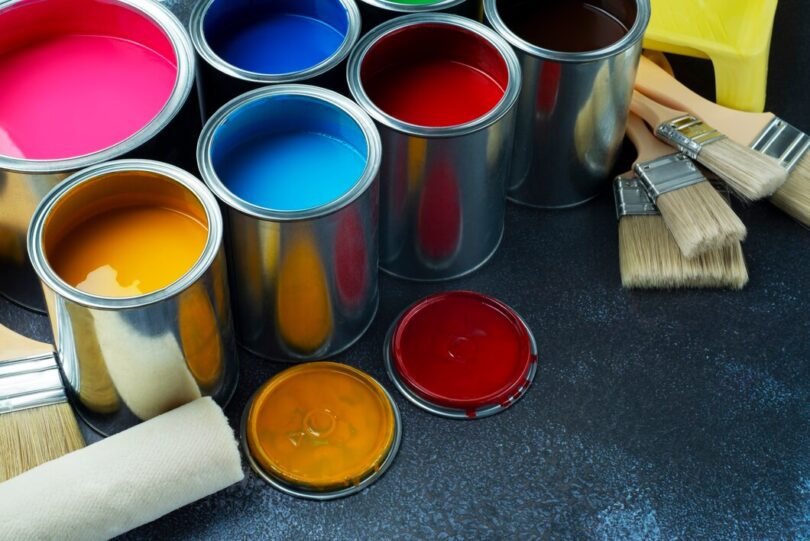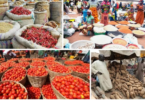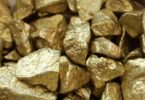For Mr. Ric, the owner of Ric Building Materials & Tools in Ikeja, Lagos, the past few years have revealed a subtle but noticeable shift in how Nigerians purchase paint.
While not drastic, more homeowners are cutting back on their paint orders, often covering only the visible areas of their buildings to save money.
“They don’t buy enough to finish the whole building anymore,” Ric notes.
“People are just painting what others can see.”
As inflation tightens its grip on Nigeria’s economy, Ric has observed this shift become more pronounced, with customers now weighing cost, quality, and durability.
Emulsion paints, which are more affordable but less durable than premium options like satin or stucco, have become increasingly popular.
“Emulsion is cheaper, and that’s why it’s the go-to choice now, even though it doesn’t last as long,” he explains.
Ric is quick to point out, though, that the decline in individual paint orders is not so significant. Building contractors, responsible for delivering full projects, have maintained steady purchases despite the rising costs.
This trend in paint buying reflects broader challenges across the building materials sector, where both consumers and suppliers are navigating rising prices while making careful choices.
The paint industry is just one part of Nigeria’s construction sector grappling with the pressure of inflation.
In Lagos, the heart of Nigeria’s construction activity, the impact of rising costs is especially evident. Both individual homeowners and building contractors are grappling with the financial strain, reflecting the broader challenges faced across the entire construction industry.
Paint has become an essential element in Nigeria’s building industry, serving both aesthetic and functional purposes in protecting structures.
Satin paint, with its subtle sheen, combines elegance with practicality. Its durability and easy-to-clean surface make it popular in high-traffic areas, providing both style and longevity.
Meanwhile, stucco, known for its textured and refined appearance, offers a sophisticated and high-end feel to structures. Significantly more expensive, stucco is often chosen for its unique ability to elevate the design of a building, particularly in upscale homes.
This evolving demand reflects a growing trend where customers are more discerning, carefully balancing cost, durability, and aesthetics in their choices, signalling a more value-conscious approach to paint selection in Nigeria’s construction market.
To gain insight into the rising costs of paints in Nigeria, TheWitness conducted a market survey across several paint dealerships in Lagos, including Ikeja, Ikorodu, and Alimosho. The findings reveal significant price hikes as of September 2024.
The prices are for an average of 20 litres of the common paint types in Nigeria.
There are various types of paints available for different surfaces, but this feature focuses on those commonly used as finishing for building walls.
The most popular types of paints in Nigeria include emulsion, satin, texcoat, and stucco. Their application depends on factors such as the property’s purpose, traffic volume, budget, and personal preference.
Moses Ibiyemi, a Lagos-based building contractor, explained that two main factors guide paint choices: budget and preference. However, other key considerations like durability and the space’s purpose also come into play.
Emulsion paint, known for its affordability, is often used for fresh walls, acting as an undercoat that prepares surfaces for better adhesion and longer-lasting finishes.
Its low cost makes it the best option for those with limited funds who need to cover large areas without breaking the bank.
Satin paint, on the other hand, is ideal for high-traffic areas like waiting rooms and staircases due to its durability and easy maintenance. It is also popular for its luxurious sheen, particularly in upscale homes.
Stucco, significantly more expensive, is used by wealthy homeowners to add sophistication and class to their spaces.
However, Ibiyemi advises that stucco may not be ideal for corporate settings, as it is more about making a statement in luxury.
Ultimately, selecting the right paint goes beyond budget and preference. It requires balancing functionality, aesthetics, and long-term durability to ensure both immediate and lasting value.
As paint prices continue to surge, TheWitness spoke to homeowners and contractors to understand how they are adapting while maintaining quality.
Sunday Nathan, a father of two, recently repainted his four-bedroom apartment, switching from emulsion to satin paint for easier maintenance. ”
With satin, I can wipe away stains whenever they show up,” he said, emphasizing the benefits with young children in the house.
To cut costs, Nathan worked with a painter skilled in mixing paints, saving about N2,000 per 20-litre bucket.







